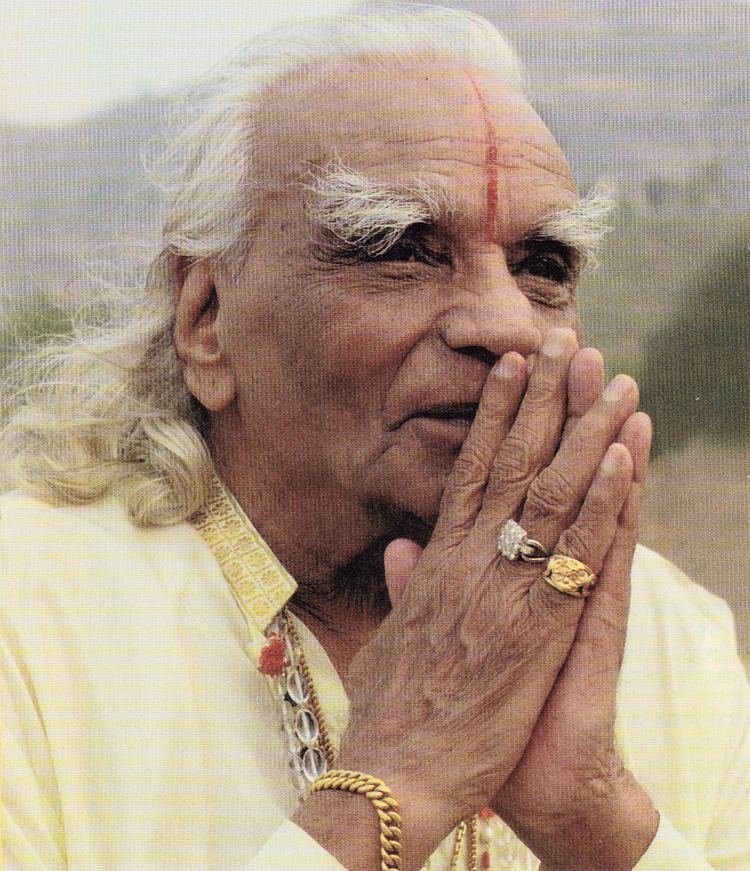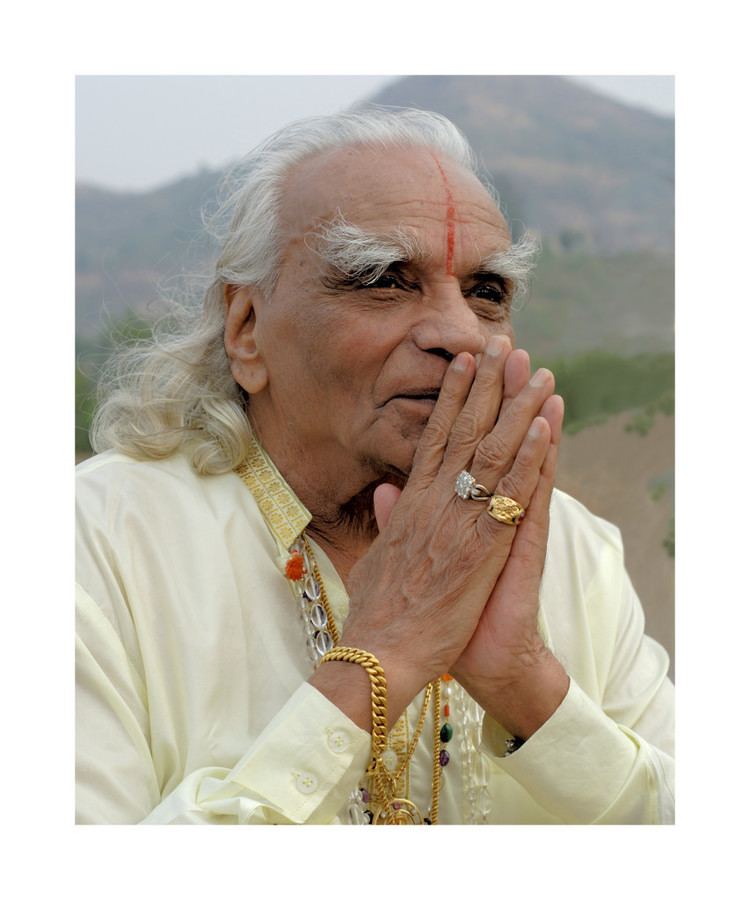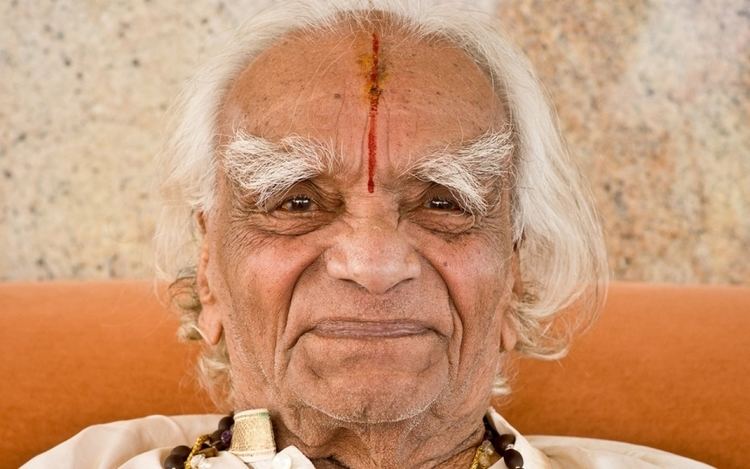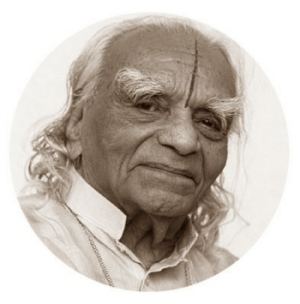Role Teacher | Name B. S. | |
 | ||
Cause of death Renal failure, Heart failure Children Geeta Iyengar, Suchita Iyengar, Sunita Iyengar, Vanita Iyengar, Savita Iyengar, Prashant Iyengar Parents Sheshamma, Sri Krishnamachar Books Light on Yoga, Light on Life: The Yoga Jou, Yoga, BKS Iyengar Yoga: Th, Light on Pranayama: The Yogi Similar People Geeta Iyengar, Prashant Iyengar, Robert Hellenga | ||
Margadarshi Archival - B K S Iyengar (Yoga Teacher)
Bellur Krishnamachar Sundararaja Iyengar (14 December 1918 – 20 August 2014), better known as B.K.S. Iyengar, was the founder of the style of yoga known as "Iyengar Yoga" and was considered one of the foremost yoga teachers in the world. He was the author of many books on yoga practice and philosophy including Light on Yoga, Light on Pranayama, Light on the Yoga Sutras of Patanjali, and Light on Life. Iyengar was one of the earliest students of Tirumalai Krishnamacharya, who is often referred to as "the father of modern yoga". He has been credited with popularizing yoga, first in India and then around the world.
Contents
- Margadarshi Archival B K S Iyengar Yoga Teacher
- Early years
- Education in yoga
- Teaching career
- International recognition
- Personal practice
- Approach to teaching
- Recognition by Krishnamacharya
- Family
- Philanthropy and activism
- Death
- References

The Indian government awarded Iyengar the Padma Shri in 1991, the Padma Bhushan in 2002 and the Padma Vibhushan in 2014. In 2004, Iyengar was named one of the 100 most influential people in the world by Time magazine.

Early years

B.K.S. Iyengar was born into a poor Sri Vaishnava Iyengar family in Bellur, Kolar district, Karnataka, India. He was the 11th of 13 children (10 of whom survived) born to Sri Krishnamachar, a school teacher, and Sheshamma. When Iyengar was five years old, his family moved to Bangalore. Four years later, the 9-year-old boy lost his father, who died of appendicitis.

Iyengar's home town, Bellur, was in the grip of the influenza pandemic at the time of his birth, and an attack of that disease left the young boy sickly and weak for many years. Throughout his childhood, he struggled with malaria, tuberculosis, typhoid fever, and general malnutrition. "My arms were thin, my legs were spindly, and my stomach protruded in an ungainly manner," he wrote. "My head used to hang down, and I had to lift it with great effort."
Education in yoga
In 1934, his brother-in-law, the yogi Sri Tirumalai Krishnamacharya, asked the 15-year-old Iyengar to come to Mysore, so as to improve his health through yoga practice. There, Iyengar learned asana practice, which steadily improved his health. Krishnamacharya had Iyengar and other students give yoga demonstration in the Maharaja's court at Mysore, which had a positive influence on Iyengar. Iyengar considers his association with his brother-in-law a turning point in his life saying that over a two-year period "he (Krishnamacharya) only taught me for about ten or fifteen days, but those few days determined what I have become today!" K. Pattabhi Jois has claimed that he, and not Krishnamacharya, was Iyengar's guru. In 1937, Krishnamacharya sent Iyengar to Pune at the age of eighteen to spread the teaching of yoga.
Though Iyengar had very high regard for Krishnamacharya, and occasionally turned to him for advice, he had a troubled relationship with his guru during his tutelage. In the beginning, Krishnamacharya predicted that the stiff, sickly teenager would not be successful at yoga. He was neglected and tasked with household chores. Only when Krishnamacharya's favorite pupil at the time, Keshavamurthy, left one day did serious training start. Krishnamacharya began teaching a series of difficult postures, sometimes telling him to not eat until he mastered a certain posture. These experiences would later inform the way he taught his students.
Teaching career
With the encouragement of Krishnamacharya, Iyengar, aged 18, moved to Pune in 1937 to teach yoga. He spent many hours each day learning and experimenting with various techniques.
He taught yoga to several noted personalities including Jiddu Krishnamurti, Jayaprakash Narayan, and Yehudi Menuhin. He taught sirsasana (head stand) to Elisabeth, Queen of Belgium when she was 80.
Among his other devotees were the novelist Aldous Huxley, the actress Annette Bening, the film maker Mira Nair and the designer Donna Karan, as well as prominent Indian figures, including the cricketer Sachin Tendulkar and the Bollywood actress Kareena Kapoor.
International recognition
In 1952, Iyengar befriended the violinist Yehudi Menuhin. Menuhin gave him the break that transformed Iyengar from a comparatively obscure Indian yoga teacher into an international guru. Because Iyengar had taught the famous philosopher Jiddu Krishnamurti, he was asked to go to Bombay to meet Menuhin, who was known to be interested in yoga. Menuhin said he was very tired and could spare only five minutes. Iyengar told him to lie down in Savasana (lying on his back), and he fell asleep. After one hour, Menuhin awoke refreshed and spent another two hours with Iyengar. Menuhin came to believe that practising yoga improved his playing, and in 1954 invited Iyengar to Switzerland. At the end of that visit, he presented his yoga teacher with a watch on the back of which was inscribed, "To my best violin teacher, BKS Iyengar". From then on Iyengar visited the west regularly, and schools teaching his system of yoga sprang up all over the world. There are now hundreds of Iyengar yoga centres.
Iyengar made his first visit to the United States in 1956, when he taught in Ann Arbor, Michigan and gave several lecture-demonstrations.
In 1966, Iyengar published his first book Light on Yoga. It eventually became an international best-seller. As of 10 October 2005, it has been translated into 17 languages and sold three million copies. Light on Yoga was followed by titles on pranayama and aspects of yoga philosophy. Iyengar authored 14 books. (See Bibliography.)
In 1975, Iyengar opened the Ramamani Iyengar Memorial Yoga Institute in Pune, in memory of his late wife. He officially retired from teaching in 1984, but continued to be active in the world of Iyengar Yoga, teaching special classes, giving lectures, and writing books. Iyengar's daughter, Geeta, and son, Prashant, have gained international acclaim as teachers.
In 2005, Iyengar visited the United States to promote his latest book, Light on Life, and to teach a special workshop at the Yoga Journal conference in Estes Park, Colorado. 3 October 2005 was declared as "B.K.S.Iyengar Day" by San Francisco city's Board of Supervisors. Anthropologist Joseph S. Alter of the University of Pittsburgh stated that Iyengar "has by far had the most profound impact on the global spread of yoga." In June 2011, he was presented with a commemorative stamp issued in his honour by the Beijing branch of China Post. There are now over thirty thousand Iyengar yoga students in 57 cities in China.
The noun "Iyengar" is defined by Oxford Dictionaries as "a type of Hatha yoga focusing on the correct alignment of the body, making use of straps, wooden blocks, and other objects as aids in achieving the correct postures."
On 14 December 2015, what would have been Iyengar's 97th birthday, he was honoured with a Google Doodle. It was shown in India, North America, much of Europe, Russia, and Indonesia.
Personal practice
Iyengar reported in interviews that, at the age of 90, he continued to practice asanas for 3 hours and pranayamas for an hour daily. Besides this, he mentioned that he found himself performing non-deliberate pranayamas at other times.
Approach to teaching
Iyengar attracted his students by offering them just what they sought – which tended to be physical stamina and flexibility. He conducted demonstrations and later, when a scooter accident dislocated his spine, began exploring the use of props to help disabled people practice Yoga. He also drew inspiration from Hindu deities such as Yoga Narasimha and stories of yogis using trees to support their asanas.
Recognition by Krishnamacharya
In an interview, Iyengar said of Krishnamacharya’s endorsement of his teaching style:
He [Krishnamacharya] never taught me much about teaching, but he saw me teach. In 1961, he came to Pune and was teaching my daughter and son. He taught them for many hours, but unfortunately they could not get what he was trying to show them. When I came up and asked what was wrong, my daughter told me what she did not understand about a posture. So, I explained to her, "You must stretch from this end to that end". And immediately when Krishnamacharya saw this, he gave me a gold medal known as Yoga Shikshaka Chakravarti, which means "Emperor of Yoga Teachers, Teacher of Teachers". He said I must teach like this and not just in private, but in public.
Family
In 1943, Iyengar married 16-year-old Ramamani in a marriage that was arranged by their parents in the usual Indian manner. He said of their marriage: "We lived without conflict as if our two souls were one." Together, they raised five daughters and a son. Ramamani Iyengar died in 1973 aged 46. Later, Iyengar named his yoga institute, the Ramamani Iyengar Memorial Yoga Institute, after her.
Both Iyengar's eldest daughter Geeta (born in 1944) and his son Prashant have become internationally-known teachers in their own right. The other children of B.K.S. Iyengar are Vanita, Sunita, Suchita, and Savita. Geeta Iyengar is the author of Yoga: A Gem for Women (2002), and Prashant is the author of several books, including A Class after a Class: Yoga, an Integrated Science (1998), and Yoga and the New Millennium (2008). Geeta and Prashant co-direct the Ramamani Iyengar Memorial Yoga Institute (RIMYI) in Pune. Iyengar's granddaughter, Abhijata Sridhar Iyengar, trained for a number of years under his tutelage, and is now a teacher both at the Institute in Pune and internationally.
Philanthropy and activism
Iyengar supported nature conservation, stating that it is important to conserve all animals and birds. He donated Rs. 2 million to Chamarajendra Zoological Gardens, Mysore, thought to be the largest donation by an individual to any zoo in India. He also adopted a tiger and a cub in memory of his wife, who died in 1973.
Iyengar helped promote awareness of multiple sclerosis with the Pune unit of the Multiple Sclerosis Society of India.
Iyengar's most important charitable project involved donations to his ancestral village of Bellur, in the Kolar district of Karnataka. Through a trust fund that he established, he led a transformation of the village, supporting a number of charitable activities there. He built a hospital, India's first temple dedicated to Sage Patanjali, a free school that supplies uniforms, books, and a hot lunch to the children of Bellur and the surrounding villages, a secondary school, and a college.
Death
Iyengar died on 20 August 2014 in Pune, India from heart failure and renal failure, aged 95. He was cremated on the same day at Vaikunth Auditorium near his home.
